Have you taken a look at your donor reactivation strategy and content lately? If you’re sending donors the same thing over and over — acquisition package, reinstatement message, campaign email, newsletters — and they aren’t responding, it’s time to revisit your strategy.
Unlike direct mail, innovations in online journey-based marketing — and the immediacy of performance metrics — allow for organizations to test bold concepts and tactics to deliver big results. It’s a game changing model.
According to Bloomerang and based on research by Adrian Sargeant, 67% of donors leave because they were never thanked, had no recollection of donating to your organization and then gave to an organization they felt was more deserving. Ouch...All indicators of poor relationship development.
The commercial sector is leveraging data and new technologies to deliver high-results and game changing programs:
- Through ads and emails, Ann Taylor, the women’s clothing retailer, reminds website shoppers of items left in their abandoned cart. Delivering ads with the items left in the cart (that yellow dress is difficult to ignore!) and emails reminding the customer that “the dress you want is waiting for you”, the potential customer is reminded to complete the transaction.
- Starbucks is able to deliver push notifications on mobile based on your geolocation, making sure you know you’re close to one of their stores. Their advertising efforts are even able to register when you’re within close proximity of one of their competitors. The technique, known as geo-fencing, allows you to customize offers, creative and more based on data from your mobile device.
These technologies can — and are — being used to produce high-results for nonprofits as well.
So what’s at play here and what steps can you follow to improve your program?
Step #1: Plan the journey.
Your old way of communicating isn’t working, so you need to plan out the new journey to rebuild trust and motivate giving. The infographic above compares the roadmap for a Causemo produced multi-channel campaign, to the increasingly less productive traditional method.
Step #2: Find What Your Supporters Care About
Learn what your supporters care about using digital interest data available from an ever increasing number of sources, as well as your own click data. Tracking this valuable information back to the messages being delivered across platforms to the constituent will lead to engagement and conversions. Then, explore where your supporters are spending time online: Facebook, Instagram, Twitter, LinkedIn and media sites. Done right, this research can reveal where to align both your ad spend and email outreach to get your message through.
Step #3: Re-build Trust
Provide these donors with content that is meaningful to them. Is it providing supplies for kids to go back to school? Is it contacting Congress about an upcoming vote? Build trust by engaging your lapsed donors in an action that demonstrates the value of their involvement. Once they’re engaged, follow-up with a series of emails to share the impact of the donor’s actions. For example, an effective impact statement could be: “Thanks to you, we were able to provide 100 kids with backpacks filled with school supplies,” or “With your help, our volunteers delivered 500 letters to Senator Smith, yours included!”.
Step #4: Make the Ask Relevant
Now that the lapsed donor is engaged once again and you know what they’re interested in, tailor a future fundraising ask that addresses what you’re able to do with the donor’s support. No more generic prospecting packages. Instead, implement personalized and meaningful asks to support what they care about.
Step #5: Thank, Thank, and Follow up.
Digital channels allow you to personalize the Thank You stream. So, use them. Follow-up on the donor's gift with a series of tailored messages to reinforce their impact. Differentiate their experience with you by showing them you know they expressed their values through a donation to you. Prove that you “get them” and value them.
As part of the journey, it’s valuable to schedule stewardship emails within a month of when the donor made a gift to let them know how their gift has been used and what you’ve been able to accomplish thanks to their generosity.
And, if a donor clicks on a video, schedule an email or post that includes a video — the donor is indicating how they are accessing information. Use it to drive the journey. And don’t let up. Remind donors consistently of the impact they’ve helped make thanks to their gift.
Journey-based marketing makes better use of data and automation to drive a more productive reinstatement strategy for valuable audiences. Utilizing new innovations in technology and leveraging user behaviors helps reduce the “churn and burn” many organizations suffer when they try to apply a “one size fits all” strategy to valuable donors. Learn more about how Causemo runs Journey-based marketing campaigns.










